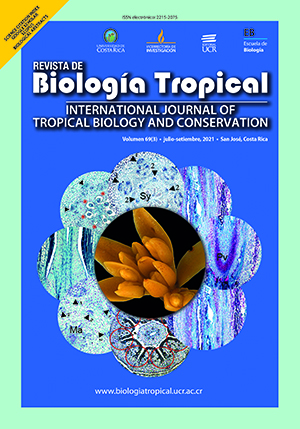Abstract
Introduction: Although wildlife crossing structures have proven successful at reducing wildlife-vehicle collisions and linking fragmented habitat, their ability to prevent electrocutions of arboreal wildlife has not been closely examined. Objective: To evaluate the effectiveness of aerial rope bridges in restoring habitat connectivity for arboreal species in Manuel Antonio, Costa Rica, while preventing electrocutions by determining 1) what species are using the rope bridges and 2) whether wildlife prefer to use rope bridges instead of other hazardous structures that cross the roads (such as telephone cables, which are often in close proximity to electric wires). Methods: From January to May 2016, nine rope bridges along the highly-trafficked main road that extends from Quepos to Manuel Antonio, Costa Rica, were monitored using camera traps, and ten rope bridges were observed directly along a paved side road off the main road. Results: A total of 11 species were seen using the bridges, and 1 540 crossings were witnessed via camera traps and observations (1 234 via camera traps, 306 during observations). Results from a paired t-test showed no significant difference in the average number of individuals crossing the road via rope bridges versus telephone cables (t(8) = 1.027, P = 0.334). Conclusions: Rope bridges are used by a variety of arboreal wildlife species with a high degree of frequency; however, due to the equally high usage of telephone cables by arboreal wildlife, they are insufficient to prevent wildlife electrocutions on their own. Rope bridges should be installed in tandem with other methods to prevent electrocutions, such as insulating electric wires, to facilitate the safe passage of wildlife over roads.

This work is licensed under a Creative Commons Attribution 4.0 International License.
Copyright (c) 2021 Revista de Biología Tropical


